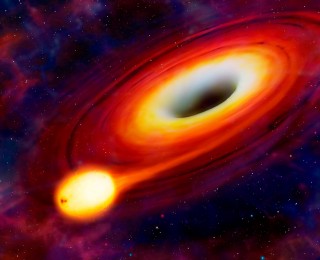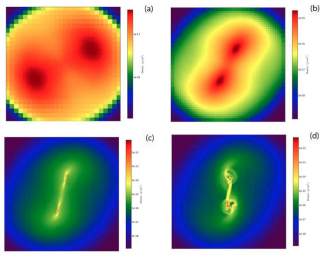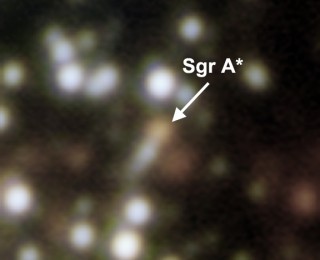
by Kim Phifer | Aug 3, 2013 | Daily Paper Summaries
Maksym et al. investigate a possible tidal flare event in Abell 1795.

by Kim Phifer | May 24, 2013 | Daily Paper Summaries
TITLE: Supernovae in the Central Parsec: A Mechanism for Producing Spatially Anisotropic Hypervelocity StarsAUTHORS: Kastytis Zubovas, Graham A. Wynn, Alessia GualandrisAUTHORS’ INSTITUTION: Theoretical Astrophysics Group, University of Leicester Hypervelocity Stars In 2005, Brown et al. discovered a star with a radial velocity of ~700 km/s, which is more than 3 times the Solar velocity! This star is moving so quickly that its velocity is high enough to escape the Milky Way. The existence of such stars, deemed hypervelocity stars (HVSs), was predicted almost 20 years earlier by Hills (1988). The so-called Hills mechanism ejects stars at high speeds from the center of the Galaxy after a binary stellar system gravitationally interacts with the supermassive black hole at the center of the Galaxy. In such a three-body interaction, one star can be ejected at very high speeds while the other remains in the central region of the Galaxy on a highly eccentric orbit. A number of highly eccentric short-period stars are observed in the Galactic center, which suggests associated HVSs may exist. Since the initial discovery of an HVS in 2005, many more have been discovered (see this astrobite). A small warning: the exact definition of HVSs can vary throughout the literature. In this post, stars traveling away from the Galactic center with velocities high enough to have become unbound from the central black hole are referred to as HVSs.While it is very likely that the Hills Mechanism does create HVSs, it is unclear whether all HVSs are created via this method. Curious if there is a supplemental method to produce HVSs, the authors of today’s paper examine the production...

by Kim Phifer | Feb 5, 2013 | Daily Paper Summaries
Boss & Keiser examine how magnetic fields with varying initial conditions affect star formation.
by Kim Phifer | Nov 6, 2012 | Daily Paper Summaries
Rafferty et al. study the effect of radio jets on the intracluster gas in Hickson Compact Group 62.

by Kim Phifer | Oct 5, 2012 | Daily Paper Summaries
Witzel et. al examine the statistical properties of the photometric variability of our Galaxy’s central black hole.




